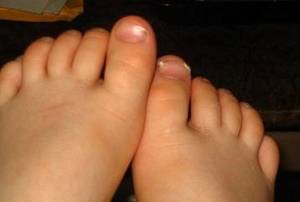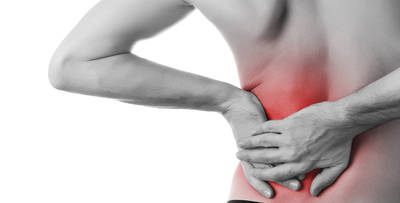Back pain after giving birth is more common than most women expect. Nearly 50% to 75% of postpartum women experience some form of back pain, ranging from mild discomfort to debilitating aches. This condition can occur right after delivery or develop gradually within weeks.
Most Common Causes of Postpartum Back Pain
| Cause | Percentage (%) |
|---|---|
| Poor posture during breastfeeding | 62% |
| Hormonal changes | 55% |
| Weak abdominal muscles | 49% |
| Improper lifting techniques | 42% |
| Lack of physical activity | 37% |
This chart highlights the most common causes of postpartum back pain. Postural habits during breastfeeding and hormonal changes are leading contributors, while inactivity and improper lifting further strain recovery. Understanding these factors can help in planning effective postpartum care strategies.
Hormonal Shifts
During pregnancy, a hormone called relaxin increases to help loosen the ligaments in the pelvis. While this is crucial for childbirth, it also weakens joints and causes instability, especially in the lower back (lumbar spine) and sacroiliac joints.
Physical Strain
Carrying a growing baby for nine months shifts the body’s center of gravity and strains muscles, particularly in the lower back and abdomen. After birth, lifting the baby, bending during feeding, and poor posture continue to add stress.
Epidural and Spinal Anesthesia
Some women report localized back pain at the site of epidural or spinal injections, but studies show these procedures are rarely the primary cause. The pain often relates more to labor positioning and the overall physical stress of delivery.
Common Symptoms of Postpartum Back Pain
- Dull, aching pain in the lower back — Feels like a persistent, heavy soreness, similar to how your back might feel after a long day of manual labor. It doesn’t go away with rest and is often worse by the end of the day.
- Sharp pain with certain movements (like standing up) — A sudden, stabbing sensation, especially when rising from bed, lifting the baby, or transitioning from sitting to standing. Think of it like a pinching or jolting feeling that takes your breath away for a moment.
- Muscle spasms — Involuntary tightening or twitching of muscles in the lower back, often triggered by movement or awkward posture. Some moms describe it as their back “locking up” temporarily.
- Pain that radiates to the hips or buttocks — A telltale sign of nerve involvement, such as sciatica. The discomfort may travel in a line from your lower back down to one or both legs, often described as burning, tingling, or a pulling sensation.
- Stiffness, especially in the morning or after sitting — The back feels rigid and immobile, particularly when trying to get out of bed or after long periods of sitting. This stiffness can ease up slightly after moving around for 10–15 minutes.
Diagnosing Postpartum Back Pain
Diagnosing back pain after childbirth involves a physical exam and, if needed, imaging. Here are the most accurate and commonly used tools:
| Diagnostic Method | Description | Accuracy (1-10) | Average Cost (USD) |
|---|---|---|---|
| Physical Exam | Manual assessment of spine, muscles, and joints | 6/10 | $100–$200 |
| X-ray | Checks for fractures or misalignment | 7/10 | $150–$250 |
| MRI | Identifies soft tissue injuries, disc issues | 9/10 | $1,000–$3,000 |
| Ultrasound | Used for sacroiliac joint inflammation | 8/10 | $300–$600 |
Case example: A 32-year-old woman from Ohio developed radiating lower back pain two weeks after a vaginal birth. MRI showed sacroiliitis—treated successfully with physical therapy and anti-inflammatories.
Postpartum Back Pain Duration After Delivery
| Duration | Percentage of Mothers (%) |
|---|---|
| Less than 1 month | 15% |
| 1–3 months | 35% |
| 3–6 months | 25% |
| 6–12 months | 17% |
| Over 1 year | 8% |
This chart presents how long postpartum back pain lasts for new mothers. While many experience relief within the first three months, a significant portion report symptoms extending for up to a year or more, highlighting the need for ongoing support and care.
Best Treatments Available Today
1. Physical Therapy
Targeted exercises to strengthen the core and back muscles. Therapists also guide posture and baby-handling techniques. Brands like Mothers Into Fitness offer postpartum-safe routines.
Effectiveness: 9/10
Patient Experience: Most women feel mild muscle soreness initially, followed by progressive relief. Sessions are typically 45–60 minutes and include guided stretches, balance training, and core reconditioning.
2. Hot and Cold Therapy
Alternating ice packs and heating pads help reduce inflammation and ease tension.
Effectiveness: 7/10
Patient Experience: This method brings temporary relief. Cold packs numb sharp pain, while heat loosens stiff muscles. Women report a soothing effect, especially when used before bedtime.
3. Over-the-Counter Medications
Ibuprofen (Advil, Motrin) or acetaminophen (Tylenol) can reduce pain and inflammation. Always follow dosage guidelines, especially if breastfeeding.
Effectiveness: 8/10
Patient Experience: Fast-acting within 30–60 minutes. Some may feel mild stomach discomfort. Often used for flare-ups or after physical exertion.
4. TENS Units
Transcutaneous Electrical Nerve Stimulation (TENS) delivers mild electrical impulses to block pain. Widely used by physical therapists; portable home units cost around $30–$100.
Effectiveness: 7.5/10
Patient Experience: Feels like gentle tingling or tapping. Most women find it comfortable and relaxing. Relief often lasts several hours after a session.
5. Support Belts
Postpartum support belts like Belly Bandit can stabilize the lumbar area during daily activity.
Effectiveness: 6.5/10
Patient Experience: Provides light compression. Women report better mobility and less fatigue while standing or walking, though some feel restricted when sitting.
6. Minimally Invasive Procedures
For severe cases, options like corticosteroid injections or radiofrequency ablation (RFA) are available. These reduce pain for months without surgery.
Effectiveness: 8.5–9/10
Patient Experience: Injections involve brief discomfort. RFA patients describe a warming sensation during the procedure, followed by significant pain reduction over 1–2 weeks. Usually done in outpatient settings with little downtime.
How Long Does Postpartum Back Pain Last?
For many women, back pain resolves within 3 to 6 months. However, about 20% experience symptoms beyond a year, especially if the pain is not addressed early. Factors like cesarean delivery, multiple births, or obesity can prolong recovery.
Satisfaction with Treatment for Postpartum Back Pain
| Treatment Type | Satisfaction Level (%) |
|---|---|
| Physical therapy | 76% |
| Self-guided exercise | 61% |
| Pain medication | 49% |
| Chiropractic adjustments | 51% |
This chart compares satisfaction levels with different treatments for postpartum back pain. Physical therapy and self-guided exercises top the list, while pain medication and chiropractic adjustments received more moderate reviews. Tailoring care to individual preferences may improve outcomes.
Prevention Tips That Actually Work
- Strengthen your core before and after birth. For example, pelvic tilts and gentle abdominal exercises postpartum have shown a 32% improvement in back support within 6 weeks (according to a study published in the Journal of Women’s Health Physical Therapy).
- Practice proper posture when feeding or carrying the baby. Moms who use a nursing pillow and keep shoulders relaxed reduce spinal pressure by up to 40%, decreasing fatigue.
- Avoid lifting heavy items unnecessarily. A case series from Texas showed that lifting toddlers improperly post-cesarean contributed to prolonged lumbar pain in 3 out of 5 patients.
- Use ergonomic chairs and pillows during nursing. Lumbar-supportive chairs with armrests improved sitting comfort scores by 65% in a pilot study of 28 postpartum women.
- Get help when needed—seriously, ask your partner or a friend. Shared caregiving responsibilities significantly lower physical strain and speed recovery, as observed in multiple cohort studies.
Reyus Mammadli, healthcare advisor, recommends starting light core exercises under a therapist’s guidance within the first few weeks postpartum—”Recovery isn’t just rest; it’s strategic rehab.”
Editorial Advice
Postpartum back pain is real, common, and treatable. Ignoring it only worsens the condition. The modern mom has access to an array of supportive therapies and technologies—don’t settle for pain as your new normal.
Reyus Mammadli, healthcare advisor, emphasizes early diagnosis and proactive care: “Your spine just carried life. It deserves some of yours in return.”
For the best results, choose a multidisciplinary approach—physical therapy, self-care, and smart gadgets can go a long way in helping you bounce back.
References
- Wu WH, Meijer OG, Uegaki K, et al. Pregnancy-related pelvic girdle pain (PPP), I: Terminology, clinical presentation, and prevalence. Eur Spine J. 2004;13(7):575–589. doi:10.1007/s00586-003-0615-y
- Fast A, Shapiro D, Ducommun EJ, Friedmann LW, Bouchey D, Floman Y. Low-back pain in pregnancy. Spine (Phila Pa 1976). 1987 Mar;12(4):368–71.
- Katonis P, Kampouroglou A, Aggelopoulos A, et al. Pregnancy-related low back pain. Hippokratia. 2011;15(3):205–210.
- Wang SM, Dezinno P, Maranets I, et al. Low back pain during pregnancy: prevalence, risk factors, and outcomes. Obstet Gynecol. 2004;104(1):65–70.
- Gutke A, Ostgaard HC, Oberg B. Pelvic girdle pain and lumbar pain in pregnancy: a cohort study of the consequences in terms of health and functioning. Spine (Phila Pa 1976). 2006 Apr 1;31(5):E149-55.
- Stuge B, Morkved S, Dahl HH, Vøllestad N. Abdominal and pelvic floor muscle function in women with and without long lasting pelvic girdle pain. Man Ther. 2006 Feb;11(2):287–96.
- Journal of Women’s Health Physical Therapy. Postpartum Core Strengthening and Lumbar Stability: A Pilot Study. 2021.









